Art World
9 Priceless Treasures Lost or Damaged in the Blaze at the Brazil National Museum
With the museum still smoldering, experts are surveying the extent of the damage.
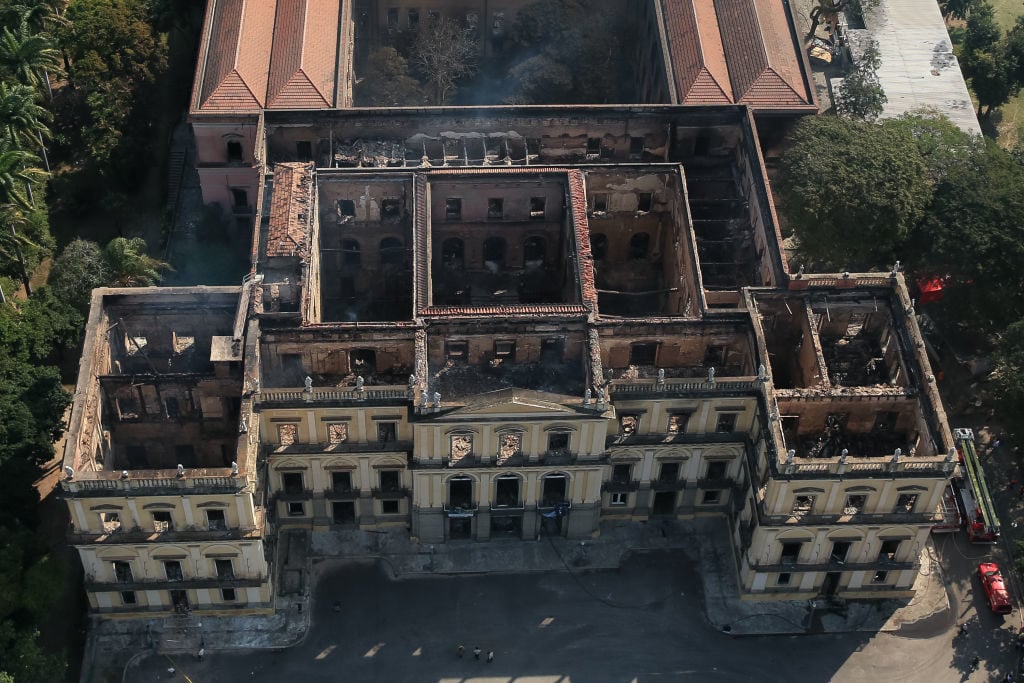
With the museum still smoldering, experts are surveying the extent of the damage.

Henri Neuendorf

Days after a fire destroyed an estimated 90 percent of the collection of Brazil’s 200-year-old National Museum in Rio de Janeiro, the county and city are coming to terms with the devastating loss of national heritage. In the wake of the blaze, a post-mortem has now begun to tally the scale of the loss.
“We were able to remove a lot of things from the inside with the help of workers of the museum,” a spokesperson for Rio’s fire department told the Guardian. Early indications, however, suggest that more than 20 million artifacts have been badly damaged. Amid the rubble, a number of irreplaceable treasures have been lost. Below are nine kinds of artifacts that are believed to have been lost or damaged in the fire.

The remains as they were displayed at the National Museum of Brazil in Rio de Janeiro. Photo: Wikimedia Commons.
At 11,500 years old, the remains of a woman dating to the Upper Paleolithic period are thought to be the oldest human remains found in the Americas. Nicknamed Luzia, the skeleton was excavated by French archaeologist Annette Laming-Emperaire from a cave in Brazil in 1975.
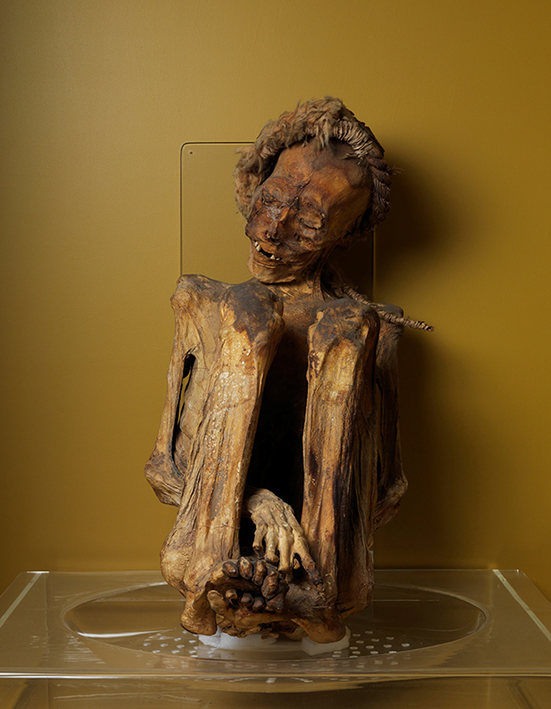
The mummified remains of a man, buried in the traditional manner, with his chin resting on his knees. Photo: Museu Nacional.
The museum’s collection included a rare example of mummified remains found in the Brazilian province of Goianá, dating to 600 years prior to the arrival of Europeans. The mummies of a woman and two children were donated to Emperor Dom Pedro II, the second and last monarch of the Empire of Brazil.
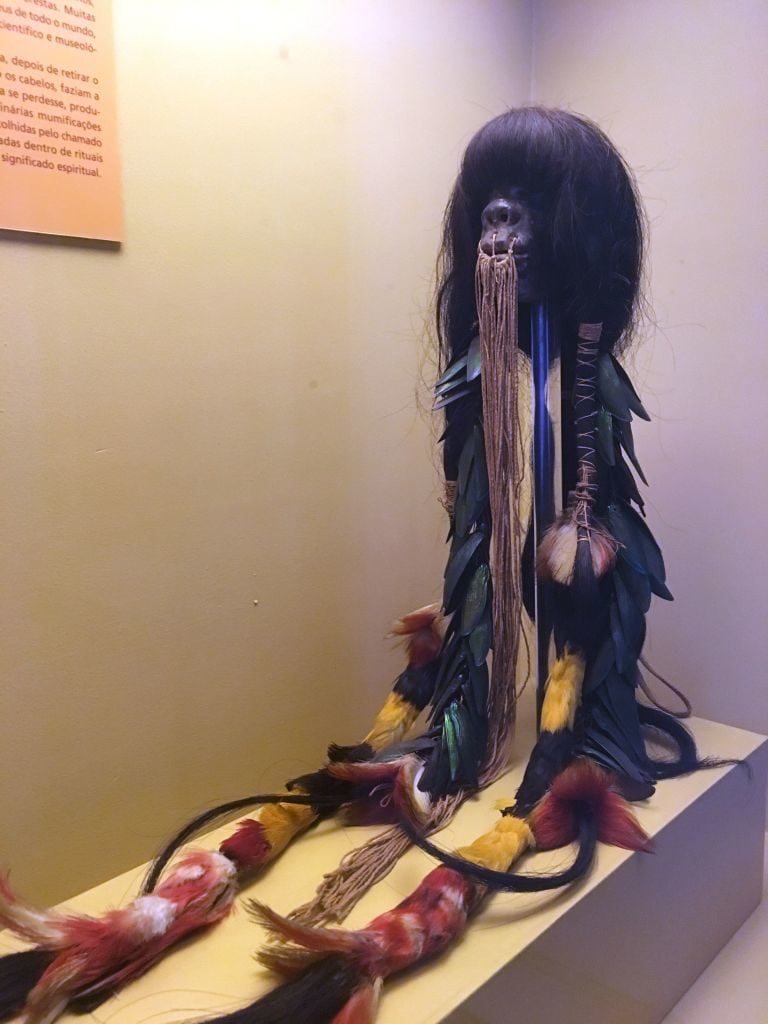
Photo: ERWAN LE BOURDONNEC/AFP/Getty Images.
In a ritualistic process, the Shuar people from the Ecuadorian Amazon basin produced shrunken heads by removing the skull while leaving the skin and hair intact. The items, which were kept in the indigenous ethnology section of the museum, were most likely incinerated by the fire.
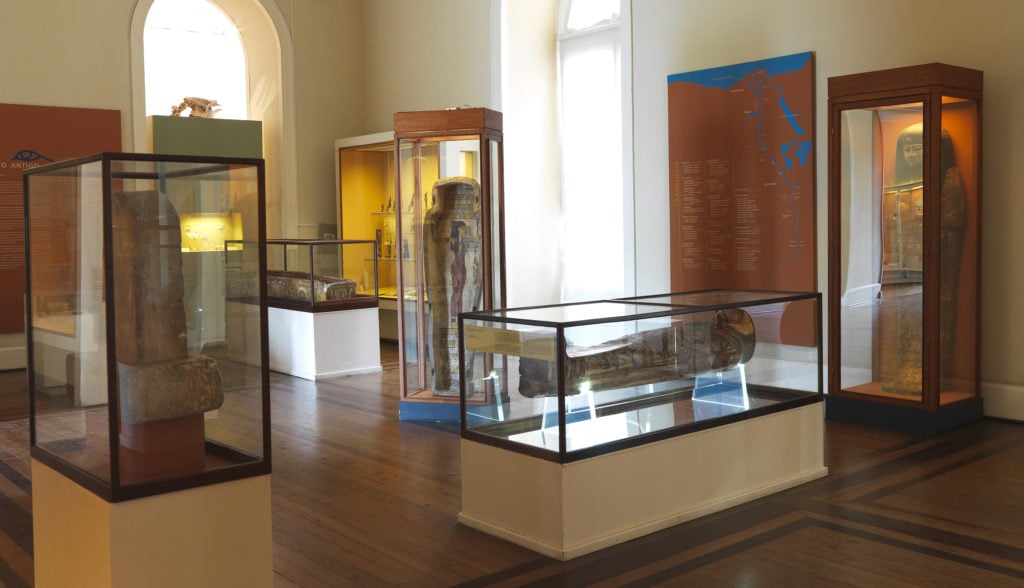
Photo: courtesy of Museu Nacional.
The museum housed more than 700 ancient Egyptian artifacts, including rare highlights like the sarcophagus of Sha-Amun-em-su, an unopened painted wooden coffin from Thebes dating to 750 BC, and a 3,000-year-old coffin containing the priest Hori and a mummified cat.
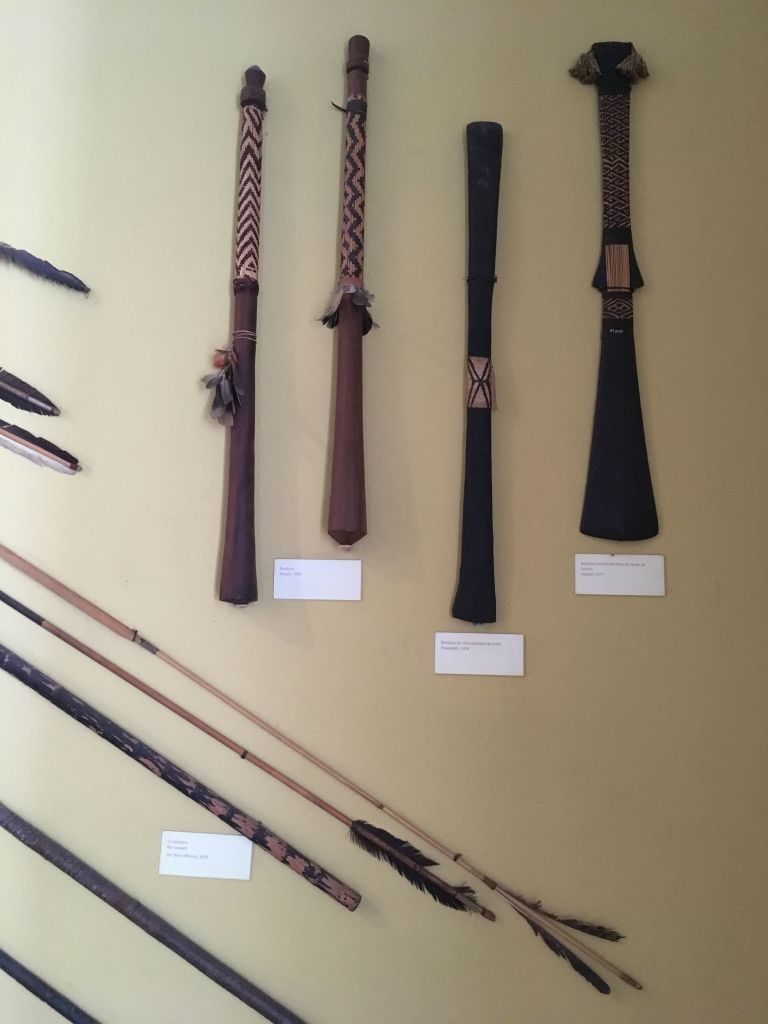
Photo: Erwan LE BOURDONNEC / AFP.
The museum’s collection of Indigenous Brazilian art and artifacts told the story of daily life and the first encounters with European colonists. Many of the artifacts were collected by Marshal Cândido Rondon, a Brazilian military officer famous for his exploration of the western Amazon Basin and his lifelong advocacy of Brazil’s indigenous populations. Items that were lost include indigenous weapons, musical instruments, and the first recordings of indigenous music.
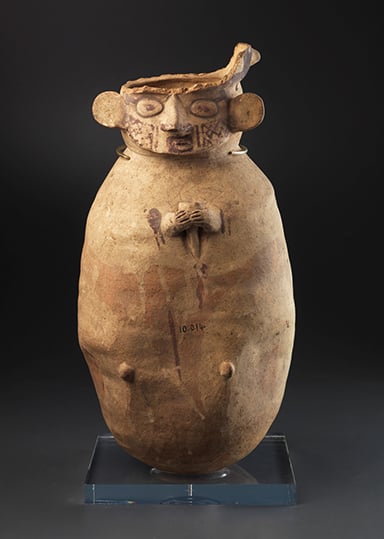
A Chancay ceramic sculpture. Photo: Museu Nacional.
Most of the museum’s 1,800 pieces of pre-Columbian art are presumed damaged or destroyed. The collection encompassed pieces from Andean civilizations, including the Inca, Chancay, and Nazca people. The collection featured textiles and illustrative ceramics, which provided insights into manufacturing and trading behaviors.

A meteorite is seen amid debris at Rio de Janeiro’s treasured National Museum. Photo: MAURO PIMENTEL/AFP/Getty Images.
The nearly six-ton behemoth is largest iron meteorite to be discovered in Brazil and was once the second-largest meteorite in the world. The huge chunk of space metal was found in Monte Santo, Bahia, in 1748, by a young boy. It is one of the few items that withstood the inferno but was blackened and charred by the flames.
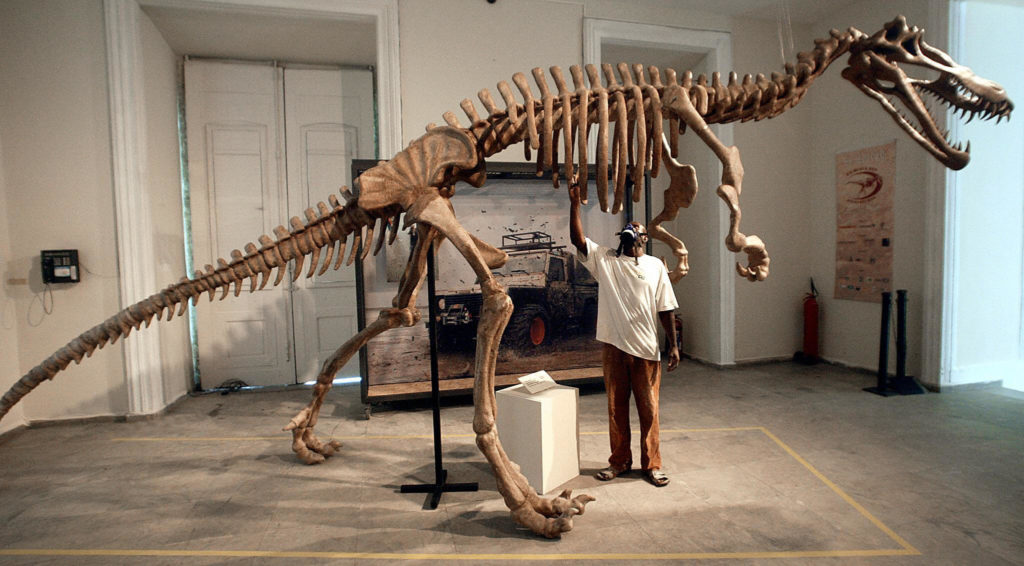
A National Museum employee dusts off a Suchomimus dinosaur skeleton, June 5, 2003. Photo: VANDERLEI ALMEIDA/AFP/Getty Images.
The Sertão region of Brazil is one of the world’s most fertile grounds for significant fossils, many of which were preserved in the museum. The holdings included 110-million-year-old fossilized turtles, an example of the Angaturama limai dinosaur, and other records of the natural history of Brazil and the entire South American continent.
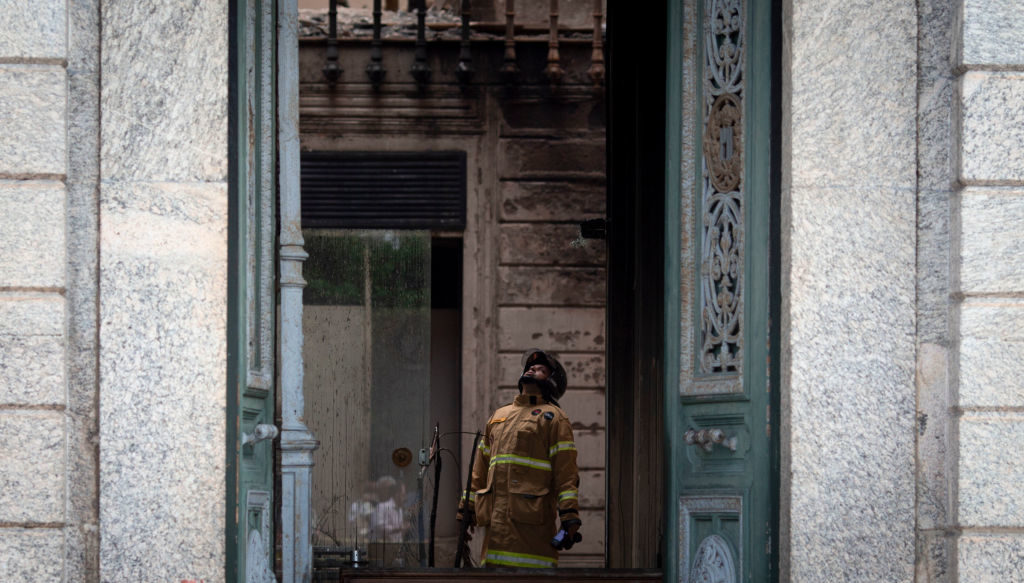
A firefighter inspects the burnt National Museum in Rio de Janeiro, Brazil, on September 4, 2018, two days after a massive fire ripped through the building. – Brazilian officials on Monday blamed years of government cutbacks for an inferno that gutted the treasured National Museum, described by President Michel Temer as a “tragic” loss of knowledge and heritage. Photo: MAURO PIMENTEL/AFP/Getty Images.
Alongside the countless precious artifacts, the museum was also home to a substantial scientific library that contained almost 500,000 books, documents, and papers. According to the Guardian, charred pages were seen fluttering on the streets around the museum.